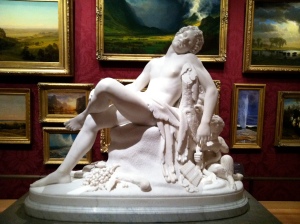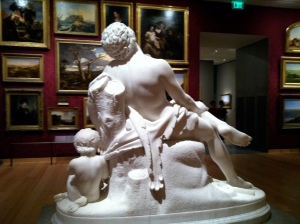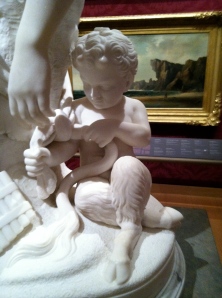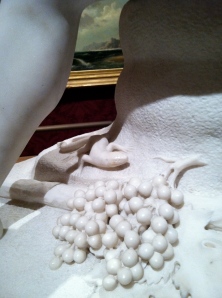I need to get back in the habit of googling Harriet Hosmer more often. I have come across two older but interesting links in recent days.
Hosmer and an illustration of her bust Daphne is featured on the “That’s So Gay” blog, which is dedicated to gay history in the Library Company of Philadelphia collections. The Library Company also holds the papers of the author Anne Hampton Brewster, a friend of Hosmer’s. I loved reading through the Brewster’s letters, which contained a description of a dramatic fight Hosmer witnessed between Charlotte Cushman and her girlfriend Matilda Hayes when all three women were living together in Rome. It was an unique insight into the life of this household. The last post on the blog promotes the upcoming exhibit “That’s So Gay: Outing Early America,” which will run from Feb. 10-Oct.17, 2014.
Philip Kennicott’s 2011 article in the Washington Post, “Art Has Yet to Face Up to Homosexuality“ raises important issues about the role of gay artists in our artist heritage and how that is represented or, often, hidden, in art history and museums. I was both happy and distressed to read this sentence though: “Artists who hid their “gay” work (Charles Demuth), or stood to the side of the mainstream art world (Marsden Hartley), or are simply forgotten (a circle of artists in Italy that included Emma Stebbins, Edmonia Lewis and Harriet Hosmer) may deserve new attention and status.” I guess I hoped my book would mean Hosmer was not-so-forgotten?




